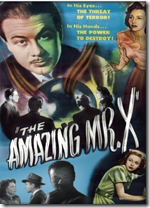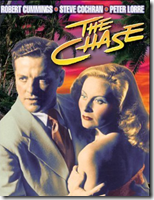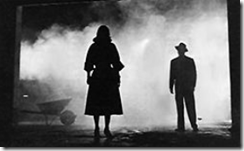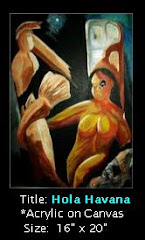It would be hard to find any act that personified the 1940s more closely than the Andrews Sisters. They were a close harmony sister act, and derivative in many ways of the Boswell Sisters from a decade earlier.
The Andrews Sisters became a `overnight success’, after just 12 years of performing- often on the Vaudeville circuit- with their first hit Bei Mir Bist Du Schoen in 1938. This became the first gold record ever garnered by a female singing group, and helped launch the then-unknown sisters into the national spotlight.
From there, they would appear in at least 15 Hollywood movies, charted 113 Billboard hits with 46 reaching the top ten. They sold more than 75 million records, and appeared on hundreds of radio shows, including their own.
During the war years, they would cut scores of victory disks, broadcast direct to the troops on AFRS, and make countless personal appearances.
They may not have been glamorous pinup girls like Betty Grable and Rita Hayworth, but they were a reminder of the `girls-next-door’ the the servicemen left behind.
In later years, they would appear on numerous TV shows, have a successful cabaret act, and even appear on Broadway.
But despite their enormous success, there were family rifts and squabbles, divorces, a 3-year break up of the act in the early 1950s, and periods of time when the sisters were reportedly not talking to each other except on stage.
Nevertheless, the trio maintained a cheerful and upbeat persona on stage, and brought hope and a sense of home to millions of G.I.s during the war.
We’ve a couple of video clips and snippets from YouTube, an Andrews Sisters movie, numerous radio shows, and some of their famous recordings for you to savor.
But first, a look at the sister act that inspired the Andrews Sisters (and a bevy of pale imitations). The Boswell Sisters.
Connee Boswell (who was always photographed sitting either due to a childhood accident or polio – sources differ) went on as a successful solo act after the trio retired in 1936.
You can certainly hear the Boswell influence in the Andrews Sisters recordings, although the sheer versatility of the Andrews Sisters is hard to match. They sang Boogie-Woogie, novelty tunes, polkas, patriotic songs, love songs, and even country music and gospel.
After their first hit, Bei Mir Bist Du Schoen in 1937, the trio scored numerous top 40 singles over the next three years, including these top ten hits.
"Hold Tight, Hold Tight"
"Beer Barrel Polka (Roll Out the Barrel)"
"Well All Right (Tonight's the Night)"
"Say Si Si (Para Vigo Me Voy)"
"The Woodpecker Song"
"Rhumboogie"
"Ferryboat Serenade"
"Beat Me, Daddy, Eight To the Bar"
Ferryboat Serenade made #1 on the Billboard Chart in 1940, and by that time the Andrews Sisters were a household name.
The quintessential Andrews Sister song, one that would define not only the trio, but the war years of the 1940s as well, came in a 1941 Abbott and Costello movie called Buck Privates.
Often imitated, but never equaled. Here are Patty, Maxine, and Laverne doing Boogie Woogie Bugle Boy.
In 1942, after their success in two Abbott & Costello features, the trio began to appear in movies of their own. While most were less than stellar attempts at film making, they were popular . . . and entertaining . . . to a war weary audience.
1942’s Private Buckaroo is a prime example. The plot is so flimsy as to not exist, but serves simply as an excuse for some light hearted comedy, along with songs and music.
Still, this is not a bad way to spend 67 minutes.
Appearing along with the Andrews Sisters are Dick Foran, Joe E. Lewis, Shemp (the `forgotten stooge’) Howard, Mary Wickes, and a very young Donald O’Conner.

During the late 1930s and throughout the 1940s, the only singing sensation to outsell the Andrews Sisters was Bing Crosby. So, quite naturally, record producers decided to team them up . . . and the happy result was perhaps the most successful collaboration of two recording acts in musical history.
The following links will take you to more than 3 dozen of their collaborative recordings, including Cool Water, Don’t Fence Me In, Accentuate The Positive, and Pistol Packing Mama.
Bing-Crosby-Andrews Sisters-11-20
bing-Crosby-Andrews Sisters-21-30
bing-Crosby-Andrews Sisters-31-38
Bing-Crosby--Andrews-Sisters-01-10
And here you’ll find a repository of more than 45 of the trio’s 78’s, including many obscure or forgotten (sometimes with good reason) songs.
Andrews Sisters-38-84
On the radio . . . well, you could pretty much catch the Andrews sisters on some musical variety show every week from the late 1930’s until the early 1950’s.
Shows like Mail Call, and Command Performance (both beamed to the troops overseas) often had them as guest stars, or even hosts. The girls even had a radio show of their own, The Eight to the Bar Ranch, with Curt Massey.
It was later renamed the N K Eight to the Bar Ranch as a nod their two sponsors, Nash Automobiles and Kelvinator.
Tennessee Bill’s OTR Archive has 19 half hour episodes of the 8-to-the Bar show which may be listened to, or downloaded here.
The trio ended the decade of the 1940’s with their biggest hit, I Can Dream, Can’t I which featured a plaintive solo by Patty, a departure from the close harmony for which the girls were famous. The next year, they followed with I want to be Loved . . . again, a huge hit.
During the early 1950s their personal appearances often sold out, including at the prestigious London Palladium in 1951.
But the group broke up for 3 years in the early 50’s, for reasons that have been held privately, and by the time they got back together their place in popular music had been captured by a handful of `new’ sister acts like the McGuire Sisters, the DeCastro Sisters, and `girl groups’ like the Chordettes
There were attempts to make comebacks in the late 1950s and into the 1960's, but none really clicked. The new mover and shaker in the music world was Rock & Roll, and many of the mainstream entertainers of yesteryear found themselves in the same position.
Laverne became sick with cancer in 1966 and died a year later. In 1968, Maxine retired, leaving Patty to perform as a solo act.
They reunited in 1974, after the Bette Midler revival of Boogie Woogie Bugle Boy brought attention to their music to a whole new generation, to star in Over Here!, which opened on Broadway on March 6, 1974. The show ran for 341 performances, and the cast album charted.
Maxine died in 1995, while Patty is still thankfully with us at the age of 92.






















